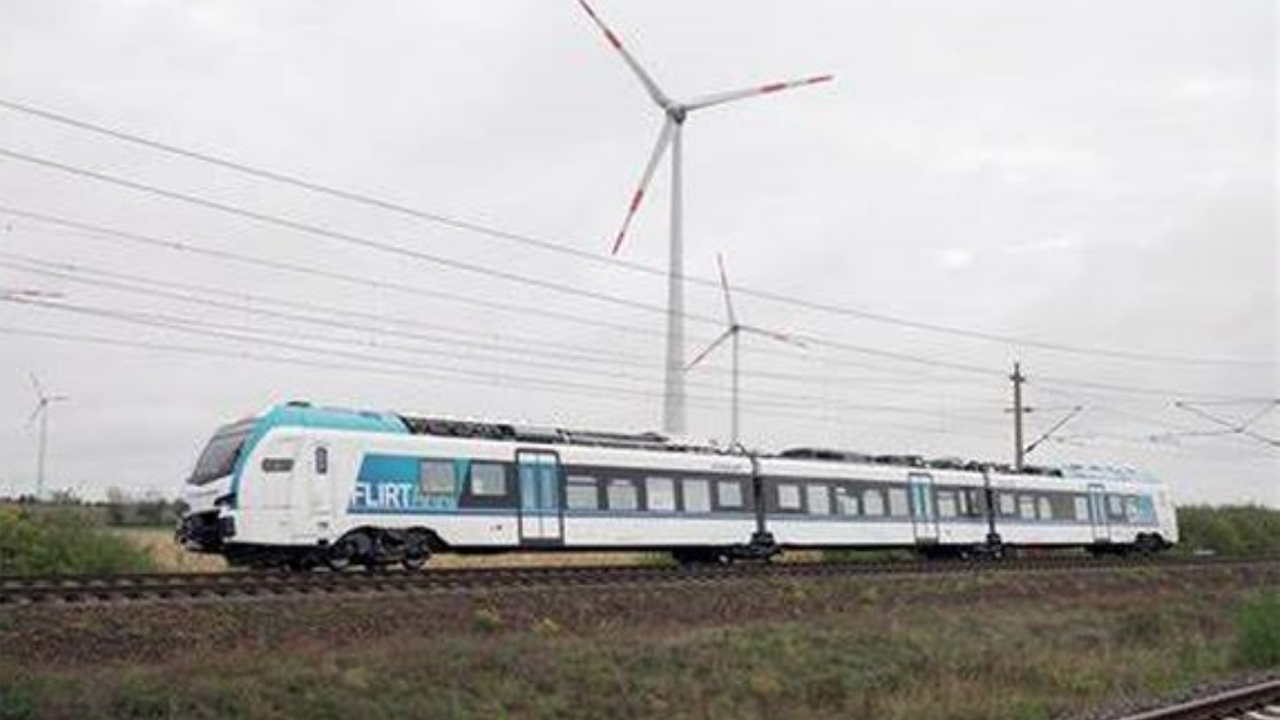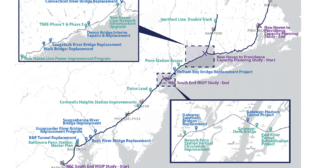
Stadler Developing Customized Batteries System for Multiple Units
Written by Simon Artymiuk, News Reporter, International Railway Journal
The Stadler Flirt Akku 3 is an example of a battery-powered multiple unit.
The Mosenas project aims to tailor battery size and weight for individual rail routes.
Stadler and the German Aerospace Centre (DLR) are working together to develop a modular, scalable battery system for multiple units that can be optimally adapted for typical rail route lengths.
The partners say this approach will enable a calculation of the best weight and size of battery needed to power a train over a given route, helping to make railway operations more sustainable.
Stadler is developing the battery system for passenger trains in cooperation with the DLR Institute for Vehicle Concepts and the DLR Institute for Energy Networks. The project has been given the name Mosenas—standing for Modular, scalable energy storage for sustainable rail passenger transport.
The special feature of the project is that it is investigating different battery types with varying performance characteristics. The idea is that depending on the structure and wiring of the battery, the performance and capacity of the system can be adapted to meet specific route requirements. This helps to save on weight and so reduces energy consumption.
Trains equipped with this innovative battery system are particularly suitable for routes on which battery-electric operation was previously considered to be uneconomic or impossible for technical reasons. The battery systems can be tailored to how often a vehicle is used in service, its operating times and the existing charging infrastructure. This can serve to optimize the expected service life of the battery systems. It also allows for electric power to be used instead of diesel even where there are no overhead wires, which helps to cut emissions.
Under the Mosenas project, researchers are investigating which battery types, capacities and configurations are best suited for reliable and economical operation of passenger trains in these situations.
To test the life and components of different battery set-ups, the project team uses comprehensive monitoring technology and computer simulations. Given the modular nature of the systems, battery capacity can be extended and designed specifically for the situations where the technology is going to be used. The theory is that the modular concept will also allow for integration with future battery technologies or fuel cells as they are developed.
The many scenarios which may be involved in using the battery system makes the project particularly challenging. For example, a high battery output is required for short periods of time when a train is accelerating, while on the other hand energy from a decelerating train can be used to recharge the battery. Another factor to be taken into account is how the battery’s output is affected by the length of time it is in use. DLR is investigating ways to balance these different factors to extend battery life.
Developing warning indicator systems is also an important consideration for the Mosenas project team. This includes systems to monitor and detect battery faults, creation of efficient fire protection strategies, and developing guidance on the correct storage of battery modules.
Another consideration is that the battery charging processes should put as little strain on the public power grid as possible. So-called second life batteries—ones which have reached the end of their automotive life but still have residual capacity—can provide power in stationary storage situations. Sector coupling with other systems of generating renewable energy can also help to make rail transport more sustainable.
The Mosenas project is also analyzing which unelectrified routes could be partially electrified in the future. From this research the scientists are developing customized solutions for the best combination of rolling stock and infrastructure on each line concerned.
The Federal Ministry for Digital and Transport is supporting the Mosenas project with a grant of $5.4 million (€5.3 million).



